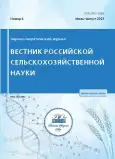The article presents the results of the primary variety study of elite forms of Kamchatka honeysuckle for the period 2019-2022. Breeding in the Kamchatka region is built on the search and accumulation of sources of genetically valuable wild forms of Kamchatka honeysuckle (Lonicera kamtschatika), as well as the improvement of source material for creating new varieties with high parameters of characteristics: winter-hardy, with different maturation periods, early-fruiting, productive, large-fruited, dessert taste. The purpose of our research was to create promising elite forms of honeysuckle - candidates for varieties with more breeding-valuable economically valuable traits for introduction into amateur horticulture in Kamchatka region. The following tasks were solved by the method of analytical breeding: to identify the regularities of the phenological phases of development and biological features of wild-growing forms of honeysuckle; to study the source material according to the characteristics: winter hardiness, general condition, early fruitfulness, yield; to evaluate the taste, biochemical parameters and weight of berries; to select the best forms for creating new varieties with a complex of valuable properties. The studies made it possible to identify the most significant and valuable elite forms from the genetic resources of wild-growing forms of Kamchatka honeysuckle - varieties that will optimize the regional assortment, and their valuable features will ensure an increase in the efficiency of the breeding process. The selected promising elite forms 1-5 (conditional name of the variety - Malka), 1-20 (conditional name of the variety - Vilyuyka), 31-35 (conditional name of the variety - Ganalochka) are candidates for cultivars and are characterized by a high degree of winter hardiness, early and medium early maturity, productivity exceeding the standard by 31.6, 38.8, 18.4%, large (1.1-1.3 g), with a pleasant dessert taste, attractive berries with various shapes, a slight dry separation without tearing the skin, with a content of sugars from 8.5 to 7.2%, ascorbic acid from 46.09 to 50.85 mg%, dry matter from 14.4 to 15.3%, acidity from 1.8 to 2.1%.
 4-9
4-9


 10-14
10-14


 15-19
15-19


 20-24
20-24


 25-28
25-28


 29-35
29-35


 36-40
36-40


 41-43
41-43


 44-49
44-49


 50-54
50-54


 55-58
55-58


 59-62
59-62


 63-67
63-67


 68-71
68-71


 72-77
72-77


 78-81
78-81


 82-85
82-85


 86-89
86-89


 90-92
90-92


 93-100
93-100


 101-103
101-103












